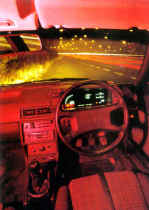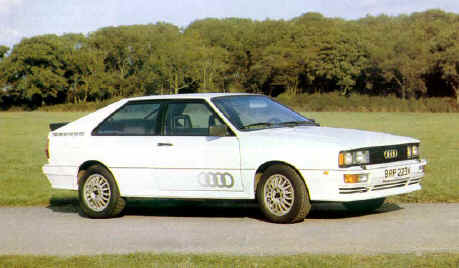|
|
|
|


Credit for the Quattro concept goes to Audi's Professor Piech in the mid 1970s, and the first Audi 4wd project ran in March 1977. Nothing more than a standard Audi 80 with a prototype 4wd transmission, it was to provide sufficient proof of the principle that Audi's management gave the project the go ahead.
Piech had calculated that the equal division of driving effort between the 4 wheels would result in less total tyre drag in most circumstances, and that this would more than offset the mechanical losses in the 4wd transmission. The prototype had 50:50 front to rear torque split that was retained in production models until the Torsen was introduced.
By September 1977 project EA 262 was well under way, and Piech's small and enthusiastic team had the first A1 prototype ready for the road. The next 2 years were taken up with not only intensive development, but the laborious task of persuading the Volkswagen Group's management of the A1's potential. Luckily, one by one, the powers-that-be were won over, and the A1 was given the go-ahead on the basis that it would be a World Rally Championship weapon.
Initially, only the necessary 400 cars (for homologation purposes) were to be built, but by the time the A1, now christened the Quattro, made its debut at the Geneva Motor Show in 1980 the Audi press release contained the following:- "production plans have not been announced, but it is known that the Quattro will be made in quantity. It is definitely not a homologation special....."
|
|
|
The first Quattros arrived in the UK in the Spring of 1981, but only in left-hand drive form. Something of an outcry followed, and by the end of the year we had right-hand drive!
The Quattro remained in significantly similar form until 1984 when the interior was updated and the dreaded synthetic voice system added along with a more sensible addition, ABS. For the UK market, this coincided with other enhancements such as the replacement of the 6J wheels with the more familiar 8Js along with V rated 215/50 tyres, lower suspension and wider wheel arches.
Not until 1988 was there any major alteration to the winning formula, when the engine came in for attention and was increased in capacity to 2226cc. A more sophisticated Bosch engine management system was fitted and the compression ratio raised to 8.6:1. The main and very substantial change was the Torsen centre differential and the removal of the little used centre diff lock control, although the rear diff lock was retained.


